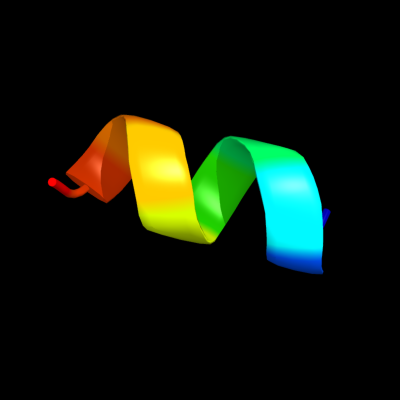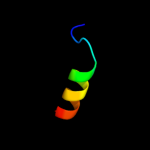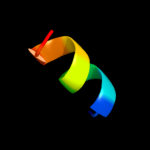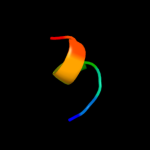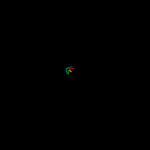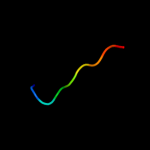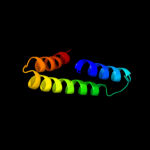| Secondary structure and disorder prediction | |
| | |
1 | . | . | . | . | . | . | . | . | 10 | . | . | . | . | . | . | . | . | . | 20 | . | . | . | . | . | . | . | . | . | 30 | . | . | . | . | . | . | . | . | . | 40 | . | . | . | . | . | . | . | . | . | 50 | . | . | . | . | . | . | . | . | . | 60 |
| Sequence | |
M | K | Q | F | L | D | F | L | P | L | V | V | F | F | A | F | Y | K | I | Y | D | I | Y | A | A | T | A | A | L | I | V | A | T | A | I | V | L | I | Y | S | W | V | R | F | R | K | V | E | K | M | A | L | I | T | F | V | L | V | V | V |
| Secondary structure | |
|  |  |  |  |  |  |  |  |  |  |  |  |  |  |  |  |  |  |  |  |  |  |  |  |  |  |  |  |  |  |  |  |  |  |  |  |  |  |  |  |  |  |  |
|
|
|
|  |  |  |  |  |  |  |  |  |  |  |  |
| SS confidence | |
|
|
|
|
|
|
|
|
|
|
|
|
|
|
|
|
|
|
|
|
|
|
|
|
|
|
|
|
|
|
|
|
|
|
|
|
|
|
|
|
|
|
|
|
|
|
|
|
|
|
|
|
|
|
|
|
|
|
|
|
| Disorder | |
? | ? | ? |
|
|
|
|
|
|
|
|
|
|
|
|
|
|
|
|
|
|
|
|
|
|
|
|
|
|
|
|
|
|
|
|
|
|
|
|
|
|
|
|
|
|
|
|
|
|
|
|
|
|
|
|
|
|
|
|
|
| Disorder confidence | |
|
|
|
|
|
|
|
|
|
|
|
|
|
|
|
|
|
|
|
|
|
|
|
|
|
|
|
|
|
|
|
|
|
|
|
|
|
|
|
|
|
|
|
|
|
|
|
|
|
|
|
|
|
|
|
|
|
|
|
|
| |
| | |
. | . | . | . | . | . | . | . | . | 70 | . | . | . | . | . | . | . | . | . | 80 | . | . | . | . | . | . | . | . | . | 90 | . | . | . | . | . | . | . | . | . | 100 | . | . | . | . | . | . | . | . | . | 110 | . | . | . | . | . | . | . | . | . | 120 |
| Sequence | |
F | G | G | L | T | L | F | F | H | N | D | E | F | I | K | W | K | V | T | V | I | Y | A | L | F | A | G | A | L | L | V | S | Q | W | V | M | K | K | P | L | I | Q | R | M | L | G | K | E | L | T | L | P | Q | P | V | W | S | K | L | N |
| Secondary structure | |
 |  |  |  |  |  |  |  |
|
|
|  |  |  |  |  |  |  |  |  |  |  |  |  |  |  |  |  |  |  |  |  |  |  |  |
|
|
|
|  |  |  |  |  |  |  |  |
|
|
|
|
|  |  |  |  |  |  |  |  |
| SS confidence | |
|
|
|
|
|
|
|
|
|
|
|
|
|
|
|
|
|
|
|
|
|
|
|
|
|
|
|
|
|
|
|
|
|
|
|
|
|
|
|
|
|
|
|
|
|
|
|
|
|
|
|
|
|
|
|
|
|
|
|
|
| Disorder | |
|
|
|
|
|
|
|
|
|
|
|
|
|
|
|
|
|
|
|
|
|
|
|
|
|
|
|
|
|
|
|
|
|
|
|
|
|
|
|
|
|
|
|
|
| ? |
|
|
| ? |
|
|
|
|
|
|
|
|
|
|
| Disorder confidence | |
|
|
|
|
|
|
|
|
|
|
|
|
|
|
|
|
|
|
|
|
|
|
|
|
|
|
|
|
|
|
|
|
|
|
|
|
|
|
|
|
|
|
|
|
|
|
|
|
|
|
|
|
|
|
|
|
|
|
|
|
| |
| | |
. | . | . | . | . | . | . | . | . | 130 | . | . | . | . | . | . | . | . | . | 140 | . | . | . | . | . | . | . | . | . | 150 | . | . | . | . | . | . | . | . | . | 160 | . | . | . | . | . | . | . | . | . | 170 | . | . | . | . | . | . | . | . | . |
| Sequence | |
L | A | W | A | V | F | F | I | L | C | G | L | A | N | I | Y | I | A | F | W | L | P | Q | N | I | W | V | N | F | K | V | F | G | L | T | A | L | T | L | I | F | T | L | L | S | G | I | Y | I | Y | R | H | M | P | Q | E | D | K | S |
| Secondary structure | |
 |  |  |  |  |  |  |  |  |  |  |  |  |  |  |  |  |  |  |  |  |
|  |  |  |  |  |  |  |  |  |  |  |  |  |  |  |  |  |  |  |  |  |  |  |  |  |  |  |  |  |
|
|
|
|
|
|
|
|
| SS confidence | |
|
|
|
|
|
|
|
|
|
|
|
|
|
|
|
|
|
|
|
|
|
|
|
|
|
|
|
|
|
|
|
|
|
|
|
|
|
|
|
|
|
|
|
|
|
|
|
|
|
|
|
|
|
|
|
|
|
|
|
| Disorder | |
|
|
|
|
|
|
|
|
|
|
|
|
|
|
|
|
|
|
|
|
|
|
|
|
|
|
|
|
|
|
|
|
|
|
|
|
|
|
|
|
|
|
|
|
|
|
|
|
|
|
|
|
| ? | ? | ? | ? | ? | ? |
| Disorder confidence | |
|
|
|
|
|
|
|
|
|
|
|
|
|
|
|
|
|
|
|
|
|
|
|
|
|
|
|
|
|
|
|
|
|
|
|
|
|
|
|
|
|
|
|
|
|
|
|
|
|
|
|
|
|
|
|
|
|
|
|
| |
| Confidence Key |
| High(9) | |
|
|
|
|
|
|
|
|
|
Low (0) |
| ? | Disordered |
  | Alpha helix |
  | Beta strand |
Hover over an aligned region to see model and summary info
Please note, only up to the top 20 hits are modelled to reduce computer load
|
| 1 |
|
PDB 2a5y chain B domain 2
Region: 2 - 17
Aligned: 16
Modelled: 16
Confidence: 11.8%
Identity: 31%
Fold: DEATH domain
Superfamily: DEATH domain
Family: Caspase recruitment domain, CARD
Phyre2
| 2 |
|
PDB 2xl1 chain A
Region: 111 - 120
Aligned: 10
Modelled: 10
Confidence: 10.0%
Identity: 40%
PDB header:translation
Chain: A: PDB Molecule:arginine attenuator peptide;
PDBTitle: structural basis of translational stalling by human cytomegalovirus2 (hcmv) and fungal arginine attenuator peptide (aap)
Phyre2
| 3 |
|
PDB 2kyg chain C
Region: 111 - 118
Aligned: 8
Modelled: 8
Confidence: 9.0%
Identity: 38%
PDB header:protein binding
Chain: C: PDB Molecule:protein cbfa2t1;
PDBTitle: structure of the aml1-eto nervy domain - pka(riia) complex and its2 contribution to aml1-eto activity
Phyre2
| 4 |
|
PDB 1ckm chain A domain 2
Region: 70 - 78
Aligned: 9
Modelled: 9
Confidence: 9.0%
Identity: 33%
Fold: ATP-grasp
Superfamily: DNA ligase/mRNA capping enzyme, catalytic domain
Family: mRNA capping enzyme
Phyre2
| 5 |
|
PDB 1p16 chain A domain 2
Region: 70 - 78
Aligned: 9
Modelled: 9
Confidence: 7.7%
Identity: 33%
Fold: ATP-grasp
Superfamily: DNA ligase/mRNA capping enzyme, catalytic domain
Family: mRNA capping enzyme
Phyre2
| 6 |
|
PDB 3s0x chain B
Region: 26 - 89
Aligned: 64
Modelled: 63
Confidence: 7.1%
Identity: 14%
PDB header:hydrolase
Chain: B: PDB Molecule:peptidase a24b, flak domain protein;
PDBTitle: the crystal structure of gxgd membrane protease flak
Phyre2
|
| Detailed template information | |
Due to computational demand, binding site predictions are not run for batch jobs
If you want to predict binding sites, please manually submit your model of choice to 3DLigandSite
Phyre is for academic use only
| Please cite: Protein structure prediction on
the web: a case study using the Phyre server |
| Kelley LA and Sternberg MJE. Nature Protocols
4, 363 - 371 (2009) [pdf] [Import into BibTeX] |
| |
| If you use the binding site
predictions from 3DLigandSite, please also cite: |
| 3DLigandSite: predicting ligand-binding sites using similar structures. |
| Wass MN, Kelley LA and Sternberg
MJ Nucleic Acids Research 38, W469-73 (2010) [PubMed] |
| |
|
|
|
|































































































































































